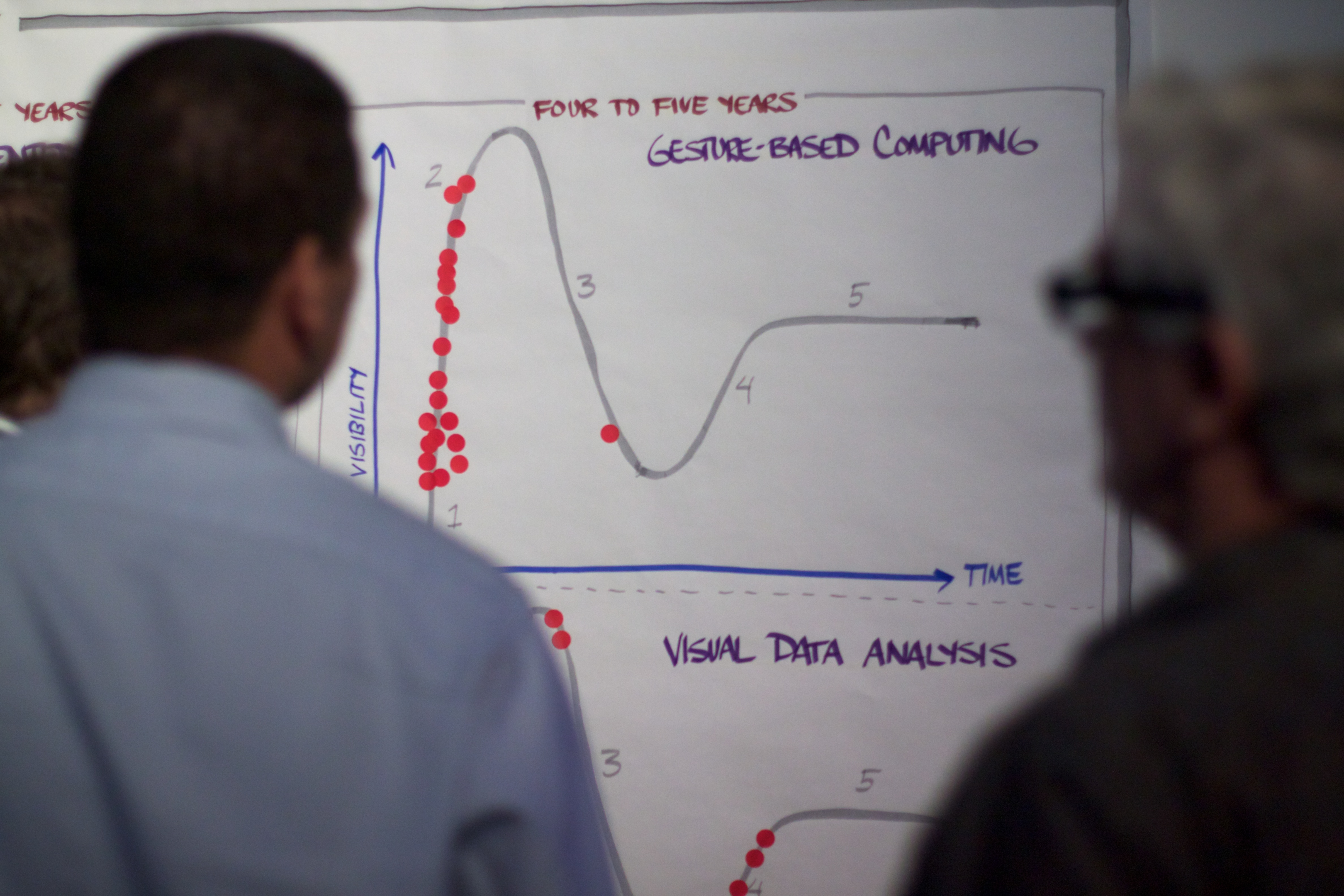The Startups Team
The Problem Slide is the single most important slide in our entire Pitch Deck. If we can’t convince an investor to care about our Problem Statement Slide then our Solution Slide isn't going to matter to potential investors.

Everything Hinges on the Problem Slide.
Our pitch deck Problem Slide is the North Star for a winning pitch deck. Our Problem Slide will be what we map every aspect of our investor pitch deck too, from our Competition slide to our Revenue Traction, to our Marketing Plan. The best pitch deck examples absolutely nail the problem slides every time.
How do Most Investors think about the Problem Slide?
Before we begin building the Problem Slide for our pitch deck, let’s think about this slide from the investor’s perspective. This whole slide deck is about getting them to love our business model, so we may as well treat them as potential customers and try to view the world through their eyes.

Investor: “Do I Understand the Problem Slide?”
We tend to think everyone understands the problem and solution. The pain points are so obvious to us because we've been beating up the key points for months — but it turns out this investor has only encountered this pain point in the 9 seconds they've been looking at our pitch deck!
A Winning Pitch Deck Paints a picture of the Pain point
Potential investors don't necessarily understand the problem, or perhaps they don't understand the big data points the way we understand them. Maybe we have a few examples of the context of how people in the world feel this way, but they've never met our target market, and they don't share the emotional connection — they are lost. We have to boil it down, and our pitch deck is the pot.

Does the Problem Slide Make Sense to a 10-Year-Old?
The way to test your Problem Slide is to imagine sitting next to a 10-year-old kid on an airplane, and when an inquisitive young individual asks about what we do, we can fire up the pitch deck and tee up the problem slide in a way that makes sense to her. The best pitch decks (even for 10-year-olds) demonstrate clarity of focus in a single sentence (sometimes 2). If we can't address the big problems in a sentence or two, our story is already lost.
Say less in your PITCH deck
Sequoia Capital famously said the best examples of a good problem statement can fit on the back of a business card. Let's ditch the long paragraphs and present our story with brevity and focus in our pitch decks. Now, we've never seen the Sequoia Capital pitch deck — but let's assume that having seen a few hundred thousand at this point, their advice has validity!

Investor: “Do I Care about this Problem Slide?”
Chances are, potential investors may not care about the problem slide in our pitch deck at all unless we present it in a way that they can relate to. We make our problem slides relatable by using some emotions or obvious benefits that the investor can clearly understand.
Investors may not directly relate to the problem
This doesn’t mean that the investor has to actually be the one with the problem (we can all relate to many problems that we may not face ourselves). We create that connection by making it clear in the pitch deck who our potential customers are, what they are trying to achieve, and the consequences they face when they can’t get it done.
Make it real for the investor
Ideally, the investor has actually experienced this problem themselves, but we always have to start from the standpoint that they have never seen it before. It goes back to making the problem simple enough for the 10-Year-Old to understand.

Investor: “Is this market big enough to build a huge company?”
Even if we solve painful problems, that doesn’t mean they are big enough problems that we could build a huge company out of them. Investors immediately translate the size of our audience to the size of the opportunity we could create.
The problem must illustrate the connection to a large enough market
If I explain that I'm going to start a local bed and breakfast, you may not get too excited. But if I present the Airbnb pitch deck problem slide and show you a customer base of millions, that startup story changes everything and now we have our audience's attention. Our Problem Slides need to make it easy for investors to understand how their investment could turn into a fortune, and we do that by aligning our pitch deck with a huge market.

The Problem Slide "Secret Formula"
Our Problem Slides can easily be constructed using a simple "secret" formula that's become the de facto pitch deck template every startup company now follows. The problem slides formula itself is easy to understand; what to actually put into the formula — not so much! Here's how the formula works:
We take the "Size” of the Problem and combine that with the “Severity” (or “Consequence”) of the problem.
We love to use these types of pitch deck templates on all of our slides in order to make startup founders' lives 100x easier and to focus less on the slides' construction and more on the content of the deck.

Example of a Perfect Pitch Deck Problem Slide
Let's put our little pitch deck template to work here by only using two variables — "Market Size" and "Severity."
“9.5 million people die of cancer each year.”
Now, first off, I hate giving this example because it’s so dark, but it also allows the presentation of a powerful problem in a single sentence in our pitch deck.
As we mentioned, there are two ingredients here — the Size of the Problem (9.5 million) and the Severity of the problem (die of cancer). Even if you have no idea what product we’re about to pitch, you would be hard-pressed not to believe saving 9.5 million lives is a massive problem worth solving.
Problem Slides Drive Reactions
This problem slide immediately triggers a reaction — and that’s the point. We can make this problem slide way, way, way more complicated by adding all kinds of qualifiers to it — but we don’t have to. The point is that with the rest of our Pitch Deck slides we’re going to explain why we are solving that exact problem, and we know the audience is listening because it’s big, and it’s painful. Reactions during our presentation are the "user engagement" of a company pitch.

But what about a “Less Severe” Problem?
Chances are, the problem you’re solving in your pitch presentation has much less consequence than our example — let’s hope! But it's all relative to your target market.
For example, if the product we were selling were a new type of skin cream, our pitch deck problem slide would relate to how our audience is feeling when they don’t use our product. That could be “itchy skin,” “wrinkles,” or just “not feeling beautiful.” All of those are real problems that people try to solve when they pull out their credit card.
No problem, is a problem.
But, think of it this way — if nobody cares about the problem our business solves, we're dead in the water. It won't matter what we present on our solutions slides if they are thinking "does this problem exist or matter?"

Problem Slide Example: Uber
Now that we’ve got a good sense of what the Problem Slide Formula looks like in our pitch deck, let’s apply it to a familiar startup company — Uber. I like using Uber to apply this pitch deck template because we all know the audience and we can certainly appreciate the problem they've solved.
For this exercise, let's start off with an awful version of the business model slide which we see most often
Example of an Awful Pitch Deck Problem Slide
“The current state of the taxi industry is outdated.”
In this example the problem slide reads as "true", but the issue is it's way too vague. The taxi industry is outdated and could apply to a ton of different business model issues, from how cabs are tracked in transit to legislation around public transit. We’re not making it clear who has that problem, what the consequence of that problem is, or how big of a problem it is, to begin with.
Side note: The problem slide only focuses on a few key elements. We'll get into the bigger picture business plan issues in our traction slide, opportunity slide, and the rest of the pitch deck and all our key metrics later. Don't try to jam it all in at once. This isn't a blog post.

Narrow the Problems Down to what our Pitch Decks Actually Solve
If by reading the Problem Slide we can't make a solid guess on what the Solution Slide might read, chances are our problem is way too amorphous. We can cite hundreds of pitch deck examples where we see a startup founder try to tackle too broad of a problem such as:
“Global Warming is one of the biggest challenges facing humanity.”
That could mean anything to anyone. Once again, if we’re going to state the problem, we have to filter it down to the part of the problem that we’re actually going to address with our business solution. The wider we keep the aperture of the problem, the less likely we are to convince anyone that we’ll solve it in our pitch slides.
Adding the Market Size to the Problem Slide
The first change we’re going to make to the Problem Slide of this pitch deck is to start off with the Size of the problem the business is chasing. Watch what little we change but what impact it has:
“The $75 billion us taxi industry is outdated.”
We didn't fix everything here. We didn't tell you why it matters or the severity, but we did explain that it's a massive problem our company seeks to solve. This is what's so great about using that big declarative number — even if I don't agree with the problem or what we're trying to solve, I can't doubt that it's a big problem.

Make Problems Credible by Making them Big
The best pitch decks take their problem slides and make them credible by adding a huge number in front of the problem. If I were to say “1 trillion curly fries are wasted every year in the United States” you may not have had a big concern about “curly fry attrition,” but when I put a big enough number in front of the problem slide, you naturally ask “Wait, what?” That's how we want investors to react.
Add Severity to the Problem Slide
Once we’ve established the Market Size to create some credibility, we now need to apply the “Severity” of the problem, or as we also consider it, the “consequence if this isn’t solved.”
We’re going to make a couple of small edits here, first adding the size of the “U.S.” market so investors know we’re focused on a solution for a particular market, but more importantly, we’re going to highlight the severity of the problem:
U.S. passengers spend $75 billion per year to ride in taxis that are unclean, hard to find and with unfair pricing.
Again, remember, this is Uber back in the early startup company days when all they had was a pitch deck. All we did was we took the same declarative statement about how much people spend on taxis. We said that it's "U.S. passengers" spending it, so we were a little bit more specific than just the whole industry.

Notice the "Severity" Pitch Deck Examples
And when we added some severity to the presentation, we added the fact that they were unclean, hard to find, and had unfair pricing. These are all things that pre Uber that were a big deal. Everyone is getting into gross taxis and they had to stand outside and raise their hand. And they had no idea how much they were getting charged.
People can relate to that. Now there could be all kinds of technology behind this, like creating marketplace economics or an AI-driven matching system, but it doesn't matter. What matters is that the investor says "Yes! That's a big market!" and "Yes! That's a real problem!"
Keep Refining the Pitch Deck Template Structure
Right now, what matters is taking our size, taking our severity, and focusing it by saying, "Look, I understand there are probably 20 other things that I can address. I can probably change the fact that people who couldn't be taxi drivers can be taxi drivers and open up employment for a million people."
Sure. But it doesn't matter if people don't care about being able to hail taxis, to begin with, so let's focus on that first. We often run into trouble with our problem slide by trying to articulate a problem and solution that's simply too broad. We want to create an emotional connection, but we also want our problem slide to be ultra-focused on a single aspect of our business model.

Pitch Deck Examples - Common Mistakes
Startup companies going through the gauntlet of creating the perfect problem slides often run into the same issues. It takes a ton of effort to consolidate all these pain points into a single sentence that absolutely resonates with investors. Here are the most common mistakes that we make along the way:
Don't Assume Investors Understand the Big Problems
No matter how obvious our problem slides seem to us as the Founders, we quickly overlook the fact that it's not necessarily the same for our audience. We've reviewed thousands of pitch deck examples and typically one of the first issues we see, even in the best pitch deck examples, is assuming the audience understands the problem.
Where that manifests itself is in jumping to conclusions. An example we used earlier was “Global Warming is one of the biggest challenges facing humanity.” We would be automatically assuming that our audience knows the impact of Global Warming, or for that matter believes it's actually a problem. When in doubt, spell it out.

Narrow your Focus to One Aspect of the Problem Slide
The next thing we want to avoid is trying to solve too many problems. This happens all the time because we get excited and we say, "Hey, not only can we solve this problem, but we can also solve this problem... and this problem... and this problem!" which is not how we create a winning pitch deck.
Why do we only get one problem to focus on in our pitch deck? There are two reasons.
Reason 1: Investors won't Remember
First, investors can only remember one aspect of your business right now. Remember, they are going to spend a couple of minutes (tops!) on our problem and solution slides and if they don't grasp the gist immediately, they will move on.
Reason 2: Expand Later in the Pitch Deck
Second, we don't need to sell every aspect of the Problem and Solution in this one problem slide. All we need to do is get them on board with what problem we are tackling. We can use the rest of the pitch deck to expand on the concept from there.

Only Present Problems that are Solved in your Solution Slide
Part of the challenge of refining the problem slide is narrowing the focus down to only what we can actually solve in the rest of our pitch deck.
If we go back to our un-edited Problem Slide "The taxi industry is outdated" - that's not a problem we can actually solve with our business model. Similar to how we can't "solve" global warming. We have to narrow the scope of the problem down to only what our solution slide will address. Otherwise, we leave way too much opportunity for the investor to take a different path in their minds about how we're not addressing the problem at hand.
Final Thoughts
As you're digesting all of this, a few final thoughts. We know a lot of this can be daunting, but our hope is that you'll regard this as a longer-term exercise that will require some evolution and not just "I have to get this out the door by Friday, I'll go with whatever works!" It'll take a minute.

The Best Pitch Decks Require 1,000 Iterations
Think of everything from the pitch deck problem slide to the solution slide as a perpetual work in progress. It's not a linear path. Every time we modify the problem slide we're going to be affecting the solution slide and vice versa.
Instead of trying to get the problem slides right the first time, we suggest to startup founders that they take an iterative approach of just trying lots of tiny tweaks, getting some feedback, and tweaking again. It's more like creating art — you don't just sit down and "make it," you start with a vision and refine it as you go. Otherwise, you'll drive yourself insane trying to get it "just right."
Pitch. Revise. Repeat.
There is a 0% chance we'll get the pitch exactly right unless we share it with lots of people. We need to show the pitch deck to as many people as are willing to listen to us. Every time we show off our pitch decks we get an opportunity to learn from the reactions and revise.
What happens when we don't share our ideas with other people is we don't understand where we're falling short — and that happens a lot here. Like we said earlier, when left to our own devices we often skip important information that we should have added or jump ahead before the audience even understands what we mean.

Pitch Decks are Hard — and that's OK
If you're banging your head against your whiteboard wondering why the perfect pitch won't just reveal itself — you're right where you're supposed to be. While the formula is simple, what we put into the formula is incredibly hard. We're talking not just about communicating this world-changing vision but also in a way that people can truly understand.
Just take it in bite-sized chunks and make a ton of tiny changes. That's the way we tackle every investor pitch deck — a few revisions at a time.
Get help.
We're not just hiding behind helpful blog posts — we're here to be the solution to your pitch deck problems with hands-on help. It's one of the hundreds of problems we help Founders with every day through our Startup accelerator. Check out the accelerator and more here.
Find this article helpful?
This is just a small sample! Register to unlock our in-depth courses, hundreds of video courses, and a library of playbooks and articles to grow your startup fast. Let us Let us show you!
Submission confirms agreement to our Terms of Service and Privacy Policy.
No comments yet.
Start a Membership to join the discussion.
Already a member? Login